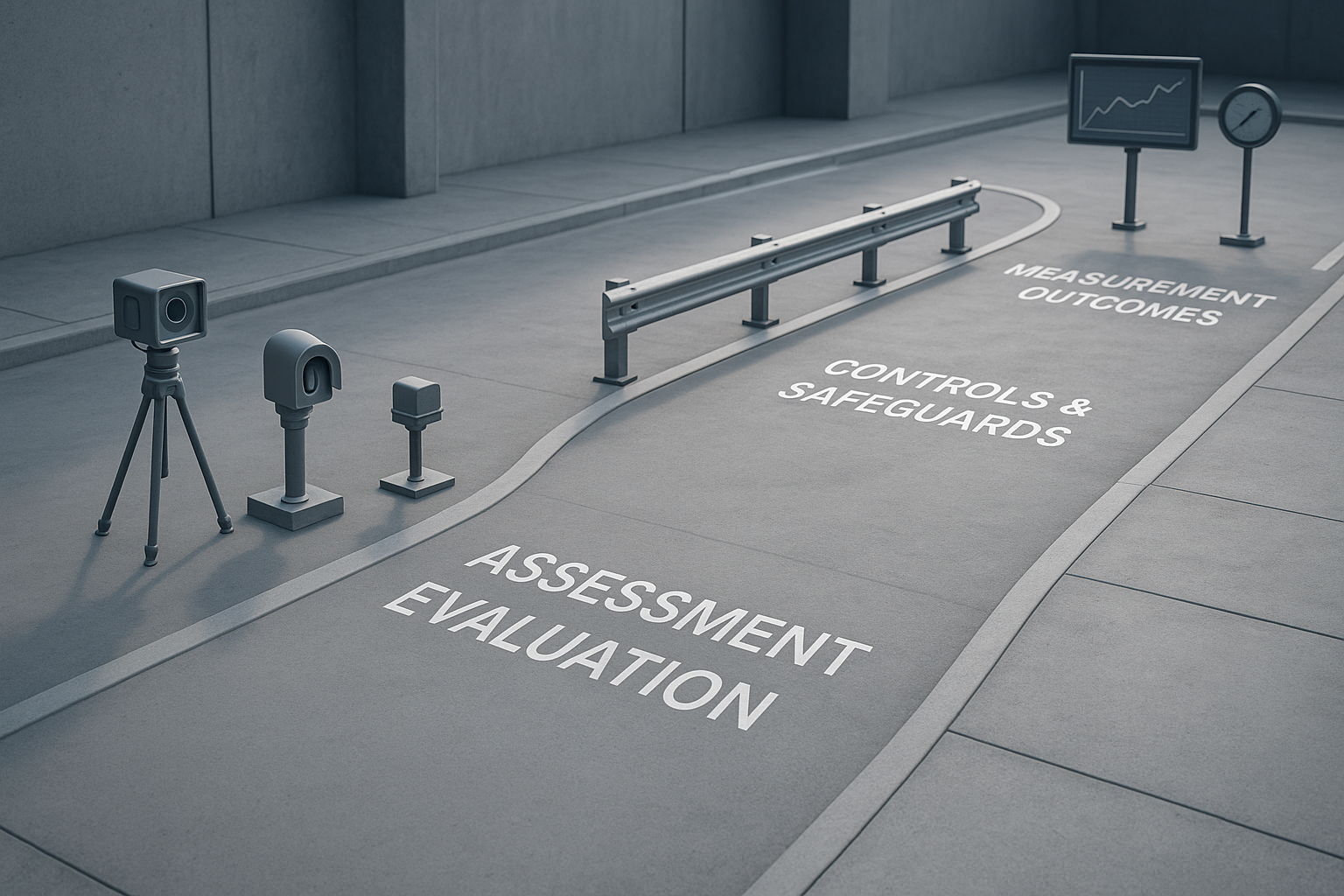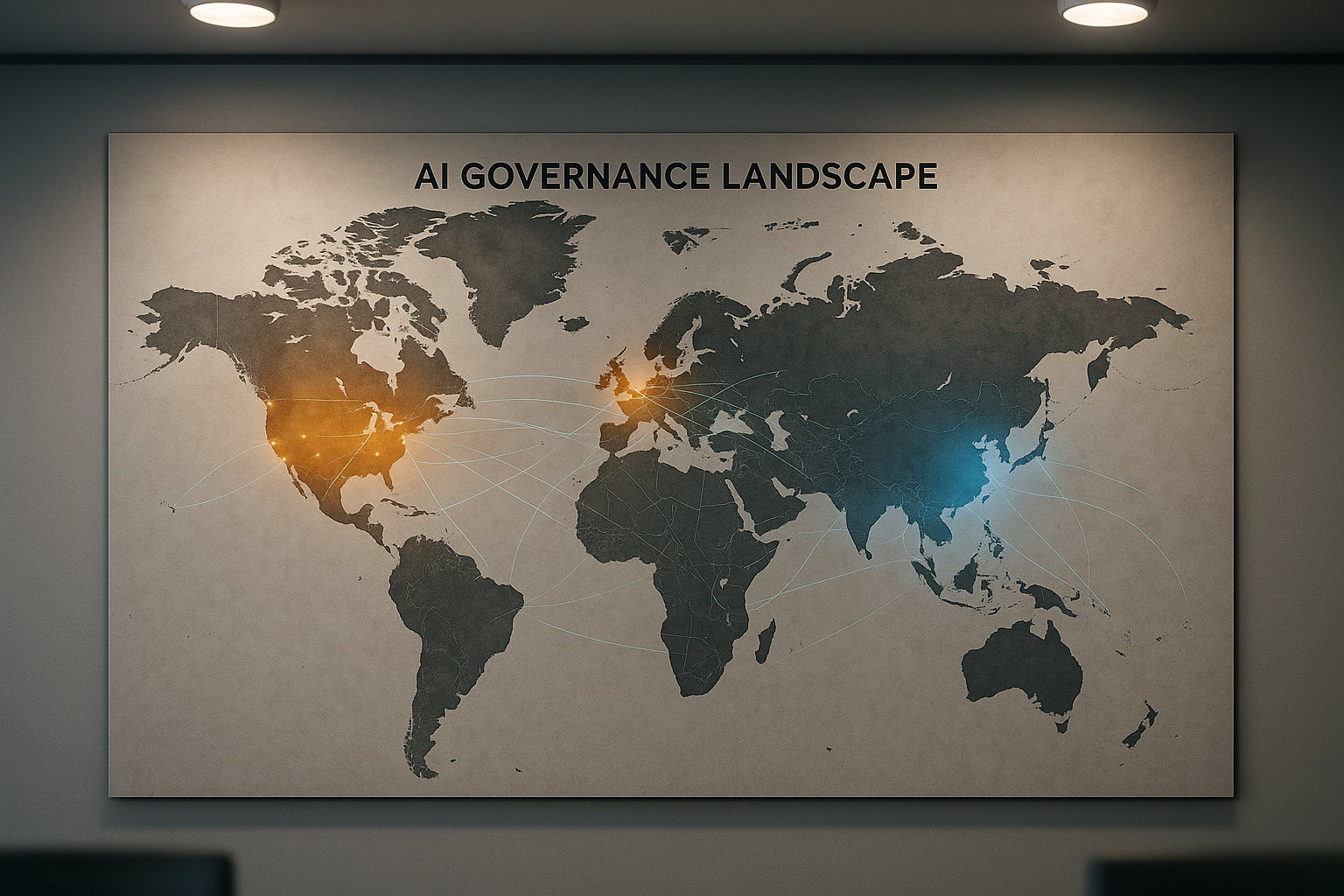From Debt to Wisdom: AI's New Digital Rules

For generations, economies ran on leverage. Companies borrowed to expand, households financed homes and education on credit, and entire nations relied on debt-fueled growth. That model delivered prosperity but also fragility. Today, a different engine is gaining traction: ideas, data, and judgment—in short, wisdom. Artificial intelligence sits at the center of this shift, turning knowledge into productivity gains and creating new ways to share value. Yet realizing that promise requires something the old economy often lacked: clear standards, human oversight, and rules that make technology useful, safe, and broadly beneficial rather than extractive.

Why wisdom beats debt in the AI age
Debt was the fuel of the old economy, enabling rapid expansion but loading balance sheets with risk. Now, intangible assets—algorithms, training data, network effects, and human insight—drive sustainable value. AI multiplies the return on knowledge by automating analysis, surfacing patterns, and accelerating decisions. The difference is fundamental: borrowing mortgages tomorrow's income, while building on wisdom compounds over time without adding liabilities.
This shift only works if AI is guided by clear standards and thoughtful oversight. NIST's AI Risk Management Framework offers a shared language—Map, Measure, Manage, Govern—to identify risks and reduce them systematically. That discipline ensures AI systems remain under human control and aligned with organizational goals. At the same time, new approaches to ownership and reward are emerging. Marpole envisions co-ownership and fair compensation so creators and communities share directly in the value their data and insights generate, rather than watching wealth concentrate in the hands of a few platform owners.
The new digital rules—both voluntary frameworks and binding laws—help translate this vision into practice. They demand transparency about how systems work, accountability when things go wrong, and safeguards to protect people from harm. Together, these ingredients form the foundation of a wisdom economy: one that rewards learning and collaboration, distributes gains more equitably, and grows without the systemic fragility that debt accumulates.
Productivity promises, real-world constraints
AI's potential to lift economic output is substantial. Evidence suggests the technology could raise productivity by roughly 0.25 to 0.6 percentage points per year in the most AI-ready countries over the next decade. That may sound modest, but compounded across an economy, it means faster income growth, better public services, and greater capacity to tackle long-term challenges like climate change and aging populations.
Yet scaling AI is not automatic. Two hard constraints loom large: compute capacity and energy. Data centers packed with graphics processors consume enormous amounts of electricity, and demand is accelerating. Analysis indicates AI-driven electricity use could add about 1.7 gigatons of carbon emissions between 2025 and 2030 under current policies—a sobering reminder that productivity gains can carry environmental costs. Without breakthroughs in chip efficiency, renewable energy supply, or cooling technology, the AI boom risks straining grids and climate targets alike.
Just as important as silicon and watts are the softer ingredients: quality data, human review, and responsible deployment. A poorly curated training set can embed bias or outdated assumptions; a lack of oversight can let errors propagate at machine speed. The NIST framework translates these challenges into practical steps, urging organizations to map their AI landscape, measure system performance and fairness, manage risks with controls, and govern the entire process with clear accountability. Planning for efficiency wins while tracking energy, cost, and risk in the same scorecard is now essential for any serious AI strategy.
Inside the EU AI Act
The European Union's AI Act is the world's first comprehensive, legally binding framework for artificial intelligence. It takes a risk-based approach: outright banning certain practices deemed unacceptable, imposing strict obligations on high-risk systems, and adding lighter requirements for general-purpose AI and lower-risk applications. The law is designed to protect fundamental rights while still encouraging innovation and investment.
Compliance is rolling out in phases. Regulators are issuing guidance, building enforcement capacity, and setting timelines so companies have a clear path to meet their obligations as each layer of the Act comes into force. Core expectations include robust data governance to ensure training sets are representative and lawfully obtained, transparency so users understand when they are interacting with an AI system, human oversight to catch and correct errors, and formal conformity assessments before placing high-risk systems on the EU market.
The Act's reach extends beyond Europe. Any vendor or platform serving EU customers—whether based in Brussels, Boston, or Bangalore—must comply when their systems fall under the law's scope. As a result, many global teams are adopting EU-aligned requirements across their entire product line rather than maintaining separate versions. That dynamic is quietly shaping global AI practices, much as Europe's data protection regulation influenced privacy standards worldwide.

The U.S. path: standards over statutes
The United States is taking a different route. Rather than passing sweeping legislation, American policymakers are leaning on voluntary standards and sector-specific guidance to manage AI risks. At the center of this approach is the NIST AI Risk Management Framework, a flexible toolset that helps organizations identify what could go wrong and put safeguards in place before problems occur. The framework revolves around four functions: Map (understand your AI systems and context), Measure (assess performance and impacts), Manage (implement controls and monitor continuously), and Govern (assign accountability and align with organizational values).
NIST has also released a Generative AI Profile that extends the core framework to challenges unique to large language models and similar systems—hallucinations that produce plausible but false information, data poisoning that corrupts training sets, and misuse by bad actors. These tools give risk managers a common vocabulary and a structured way to think through trade-offs, even when the technology is evolving faster than regulation can follow.
Federal agencies are aligning their own AI initiatives to the NIST guidance, running structured pilots and tracking results without waiting for Congress to legislate. This bottom-up, standards-driven model offers speed and adaptability. It also promotes interoperability: a multinational company that maps its systems to NIST can more easily demonstrate alignment with EU legal obligations, since both frameworks emphasize transparency, accountability, and human oversight. The two approaches are converging in practice, even as they differ in legal force.
What governments are learning from pilots
Public-sector AI trials are revealing what works, what fails, and where the friction points lie. Australia recently piloted Microsoft 365 Copilot across 7,600 staff in 60 agencies, testing whether generative AI could speed up drafting, research, and routine analysis without compromising data security or service quality. Early results showed measurable time savings but also highlighted cost trade-offs, the need for clear usage policies, and the importance of training staff to validate AI-generated outputs rather than accept them blindly.
International financial supervisors are experimenting too. The Bank for International Settlements launched a project to build AI tools that help central banks and regulators monitor markets, detect emerging risks, and analyze complex datasets more quickly. These efforts are not about replacing human judgment but augmenting it—giving experts better situational awareness so they can act sooner when trouble appears.
A consistent set of lessons is emerging from these pilots. Start small with well-defined use cases. Set guardrails using NIST-aligned controls: clear data policies, logging and audit trails, human review checkpoints, and fallback procedures when the system fails. Measure outcomes rigorously, not just accuracy but also user trust, cost per task, and unintended consequences. Keep humans in the loop, especially for high-stakes decisions. Finally, treat pilots as learning exercises that surface data quality issues, access constraints, and skill gaps before committing to full-scale rollout. This disciplined approach is helping governments build institutional capacity and update procurement practices to reflect AI's unique risks and opportunities.
Finance, concentration, and systemic risk
Central banks and financial regulators are watching the AI wave with a mixture of optimism and caution. On one hand, machine learning can improve credit scoring, detect fraud faster, and automate compliance checks. On the other, the concentration of AI capabilities in a handful of cloud providers and model vendors raises new systemic concerns. If a widely used service suffers an outage, gets compromised, or delivers flawed outputs, the shock could ripple across many institutions simultaneously—a dynamic that amplifies rather than diversifies risk.
Regulators are urging banks, insurers, and asset managers to strengthen their defenses. That means going beyond accuracy metrics to build robust model risk management, tighten third-party oversight, and rehearse incident response playbooks. Firms should align their controls with the EU's high-risk expectations and the NIST framework, ensuring they can explain decisions, audit system behavior, and intervene when outcomes drift. Clear governance protects not only the institution but also the households and small businesses that depend on fair access to credit, insurance, and investment services.
Market structure is shifting in other ways too. AI-driven trading strategies operate at speeds and scales that can destabilize prices during stress. Automated underwriting might inadvertently exclude entire communities if training data reflects historical bias. Supervisors are updating their toolkits—stress-testing AI models, requiring human sign-off on material decisions, and demanding contingency plans that do not assume the AI will always be available. The goal is resilience and fairness, ensuring the financial system remains a stable platform for the broader economy even as technology transforms how it operates.
A practical playbook for a wisdom economy
Organizations and individuals alike can take concrete steps to harness AI's power responsibly and equitably. Start by choosing high-value, lower-risk use cases—tasks where automation saves time and improves consistency without exposing people to harm if the system errs. Require human oversight and clear accountability for outcomes; every AI deployment should have a named owner who understands how it works and can intervene when necessary.
Use the NIST framework to structure your governance program. Map your systems and their contexts, measure performance across multiple dimensions including fairness and robustness, manage risks with layered controls, and govern the whole effort with executive sponsorship and regular review. If you serve customers in the European Union, map those NIST practices to the EU AI Act's obligations—transparency documentation, conformity assessments, incident reporting—so compliance becomes an extension of good risk management rather than a separate burden.
Track compute and energy use alongside return on investment. Add sustainability metrics—kilowatt-hours per inference, carbon intensity of your cloud region, efficiency gains from model optimization—to project reviews and quarterly business updates. These numbers matter as much as cost savings and revenue growth in a world constrained by power supply and climate goals.
Invest in data literacy across your organization. Simple policies people can follow—how to label sensitive data, when to escalate an AI decision for review, how to report unexpected behavior—are more effective than complex procedures no one reads. Reward knowledge sharing; create forums where teams can discuss what worked, what failed, and what they learned. A wisdom economy thrives on the free flow of insight, not the hoarding of secrets.
Finally, explore ownership and compensation models that let creators share in the value their contributions generate. Co-ownership structures, contributor dividends, and transparent revenue splits can align incentives and distribute gains more broadly than traditional employment or licensing deals. This is the future Marpole's mission points toward: a system where knowledge workers, data contributors, and communities participate as stakeholders, not just as inputs, so prosperity flows back to the people who make it possible.
Frequently Asked Questions
What is the EU AI Act and do I need to comply?
The EU AI Act is a comprehensive law regulating artificial intelligence based on risk levels. It bans unacceptable practices, sets strict requirements for high-risk systems, and applies lighter rules to general-purpose AI. You must comply if you provide AI systems or services to customers in the European Union, regardless of where your organization is based. Compliance includes data governance, transparency, human oversight, and conformity assessments depending on your system's risk category.
What is the NIST AI Risk Management Framework in plain terms?
NIST's framework is a voluntary guide that helps organizations manage AI risks in four steps: Map your AI systems and their operating environment; Measure how well they perform and whether they cause harm; Manage risks by implementing controls and monitoring continuously; and Govern the entire process with clear accountability and alignment to values. It provides a common language for discussing AI safety without prescribing specific technologies or solutions.
Will AI really boost productivity, and by how much?
Evidence suggests AI could raise productivity by roughly 0.25 to 0.6 percentage points per year in advanced economies over the next decade. Those gains depend on widespread adoption, quality data, skilled workers, and supportive infrastructure. Real-world results vary widely by sector and use case, and realizing the full potential requires overcoming constraints like energy supply, compute capacity, and organizational readiness to change how work gets done.
Is AI's growth limited by energy and compute constraints?
Yes, energy and compute are significant bottlenecks. Training and running large AI models consumes vast amounts of electricity, and current projections show AI-driven demand could add approximately 1.7 gigatons of emissions between 2025 and 2030 under existing policies. Continued growth will require breakthroughs in chip efficiency, expanded renewable energy capacity, and smarter cooling and data-center design to avoid straining power grids and undermining climate goals.


